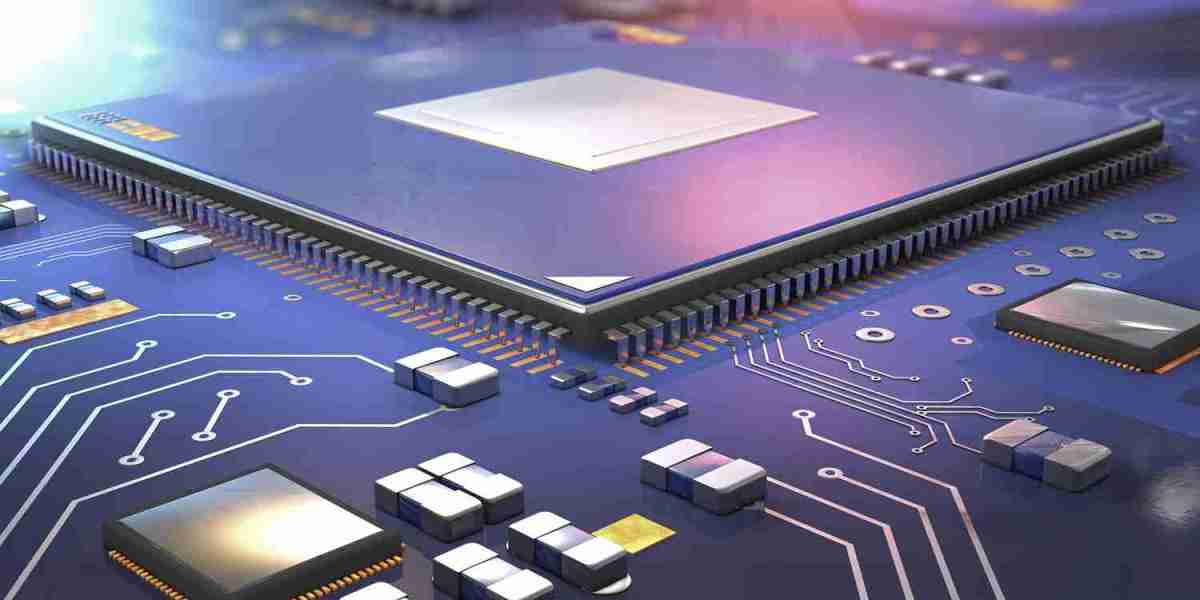The WBG Semiconductors OSAT Market has seen significant growth in recent years, driven by the increasing demand for high-efficiency, high-performance devices in various industries, from electric vehicles (EVs) to renewable energy systems. WBG semiconductors, such as silicon carbide (SiC) and gallium nitride (GaN), offer superior thermal, electrical, and power handling capabilities compared to traditional silicon-based devices. These advantages have positioned WBG semiconductors as a game-changer in many technological advancements, which brings us to the critical role of Outsourced Semiconductor Assembly and Test (OSAT) services in the WBG semiconductor supply chain.
The Role of OSAT in WBG Semiconductor Manufacturing
Outsourced Semiconductor Assembly and Test (OSAT) services are essential to the production of WBG semiconductors. OSAT providers specialize in the assembly, packaging, and testing of semiconductor devices after wafer fabrication. For WBG semiconductors, this stage of production requires specialized processes due to the unique material properties of SiC and GaN, such as their high thermal conductivity and electrical performance. OSAT services are responsible for ensuring that these semiconductors are packaged in a way that optimizes their performance while meeting the rigorous quality standards needed for demanding applications.
As WBG semiconductors continue to gain traction in key sectors like automotive, telecommunications, and energy, the demand for OSAT services is projected to increase. This growth, in turn, is having a significant economic impact across multiple industries and regions.
Economic Impacts on the Semiconductor Industry
The expansion of the WBG semiconductor market is fostering substantial growth in the global semiconductor industry. OSAT providers play a crucial role in this growth, as they enable semiconductor companies to focus on their core competencies, such as chip design and wafer fabrication. By outsourcing assembly and testing services, semiconductor manufacturers can reduce capital expenditures and focus on scaling production more efficiently.
This trend is also fueling job creation, particularly in regions with established OSAT ecosystems. Countries like China, Taiwan, South Korea, and Singapore have become central hubs for semiconductor assembly and testing due to their competitive labor costs, access to skilled technicians, and proximity to semiconductor fabs. This has led to the creation of thousands of jobs in the OSAT sector, ranging from engineering and research positions to technicians and assembly line workers. Additionally, with the rising demand for WBG semiconductors, local economies in these regions are benefiting from increased manufacturing output and the overall growth of the tech sector.
Impact on the Automotive and Electric Vehicle (EV) Industry
One of the most significant drivers of WBG semiconductor adoption is the automotive industry, particularly in the electric vehicle (EV) market. WBG devices, especially SiC, are ideal for EV powertrains due to their high efficiency and ability to handle high voltage and power. By improving power conversion efficiency, SiC-based semiconductors allow for smaller, lighter, and more efficient power systems in EVs.
As the demand for electric vehicles continues to grow, the need for advanced WBG semiconductors and related OSAT services is expected to skyrocket. This directly impacts the economy by driving the expansion of both the automotive and semiconductor industries. Furthermore, it accelerates the adoption of green technologies and supports the transition to a more sustainable future, ultimately benefiting both businesses and consumers.
The Role of OSAT Providers in Sustainability
As the world increasingly prioritizes sustainability, OSAT providers are playing an essential role in ensuring that WBG semiconductors meet environmental and regulatory standards. These providers are implementing more sustainable packaging techniques, improving energy efficiency in their testing processes, and reducing waste in semiconductor manufacturing.
Moreover, OSAT services are aiding semiconductor manufacturers in meeting the stringent requirements set by the automotive and renewable energy industries, which are becoming more focused on energy efficiency and the reduction of their carbon footprints. This shift toward more sustainable practices is not only environmentally beneficial but also economically advantageous, as it attracts investments from companies that prioritize sustainability.
Future Outlook
The WBG semiconductor OSAT market is poised for continued growth in the coming years. As the demand for WBG devices in automotive, renewable energy, and telecommunications applications rises, the OSAT market will experience increased demand for specialized assembly and testing services. This growth will further stimulate the global semiconductor ecosystem, generating economic opportunities in both established and emerging markets.
The economic impact of the WBG semiconductor OSAT market is not just limited to the semiconductor and automotive industries. It will also contribute to advancements in energy efficiency, sustainability, and the global transition to renewable energy technologies, ensuring that WBG semiconductors and OSAT services remain integral to future technological progress.




